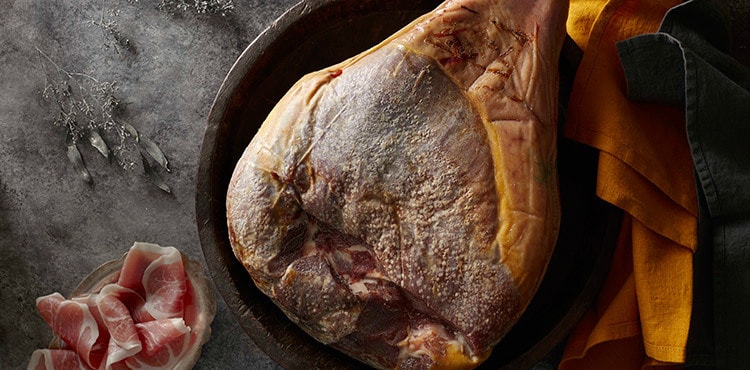
When it comes to Old World cheeses, you see it often enough: like Parmigiano Reggiano PDO or Manchego PDO. You likely also see AOC, DOP, or PGI—and you might wonder about all those abbreviations. And they don’t just apply to cheese; meats, wines, oils, and more are subject to this criteria. For a closer look, consider Bayonne ham PGI, a luscious and slightly salty cured ham from France.
Smart Sourcing
PDO and PGI are geographical indications: PDO for protected designation of origin and PGI for protected geographical indication (the other terms are simply translations). They signify an agreement within the European Union that specific foods are the way they are because of region-specific factors. Essentially, they protect the ideas of terroir and tradition, while ensuring that you get what you think you’re getting. It’s like farm-to-table: that ability to trace exactly where your food came from.
You’ll know a food has a protected designation of origin by its label. When buying Bayonne ham PGI, for example, look for the EU’s standardized seal. This blue and yellow seal of stripes surrounded by stars is a proud mark of Bayonne ham’s history, quality, and roots in Southwest France. (For PDO products, look for a red and yellow seal.)
Together, designations like PDO and PGI are good for both consumers and regional producers. On a consumer level, they guarantee quality and a transparent food chain that prevents food fraud. For manufacturers, they protect regional and traditional practices.
Following PDO regulations, the product must come from a specific region, have qualities influenced by that area, and be produced, processed, and prepared in that region. PGI is similar in that the product must come from a specific region and have qualities influenced by that area. For PGI, at least one of the steps of production, processing, or preparation must be done in the region, as opposed to all.
Choice Charcuterie: Bayonne Ham PGI
Take a closer look at Bayonne ham, a cured ham that’s identifiable by its branding of a cross. Bayonne ham has been protected by a PGI status since 1998, so it has a long history of close regulation and traditional production.
In order to be called Bayonne ham, the ham must be produced in the Adour Basin in Southwest France with both pigs and salt that come from the region. Ham distinguished as Bayonne ham can be traced to 950 pig farms and 39 livestock producers, all located in Southwest France—allowing the consumer to be conscious and informed.
The fresh hams are salted, dried, and matured. Bayonne ham is also made using protected ingredients: The salt, from a spring in Salies-de-Béarn, also has a PGI, giving Bayonne ham a real taste of place.
The hams are then accredited, registered, and checked repeatedly before being judged by professional testers to ensure the correct flavor and texture.
The result is a high-quality product that highlights the stringency of the make process. For Bayonne Ham, a jewel of Southwestern French cuisine, the process yields a ham with a melting texture, mild flavor, balanced saltiness, and delicate aroma.
When you’re shopping, pay special attention to those PDO and PGI products; they come with history, transparency, and attention to detail that make for a truly delicious experience. So, pair your favorite cheese with Bayonne ham PGI, and know you’re choosing quality charcuterie with a story.
Photo Credit: Jennifer Silverberg




